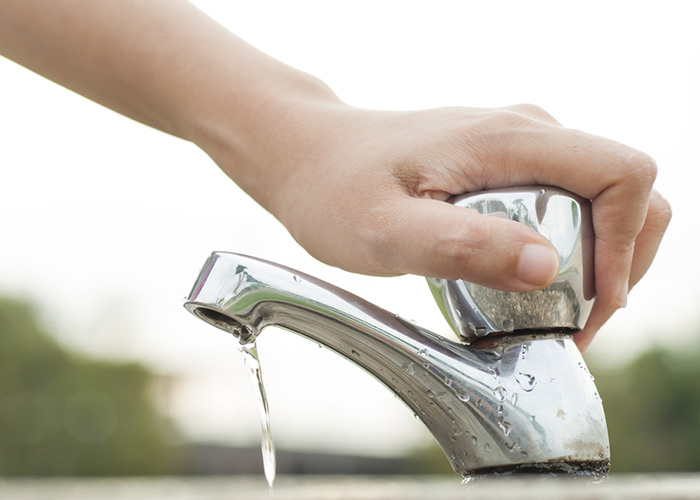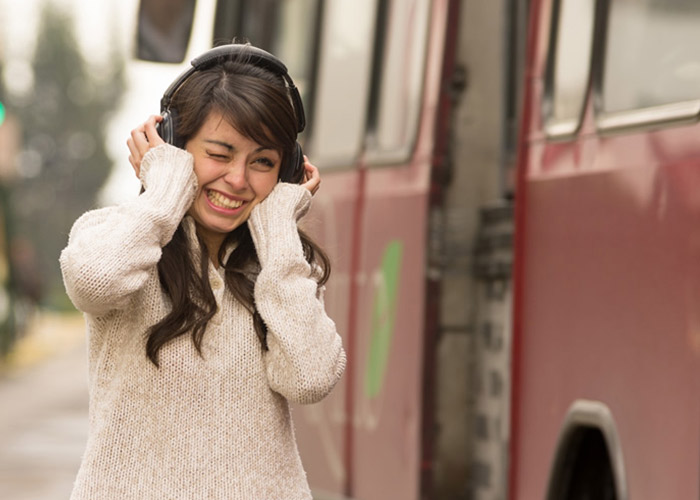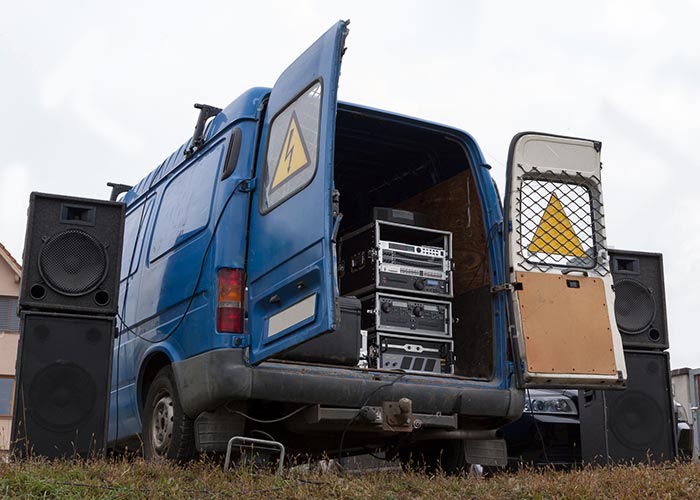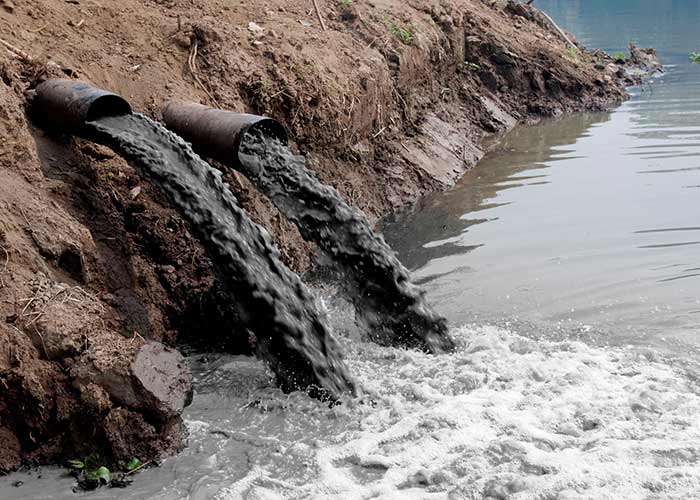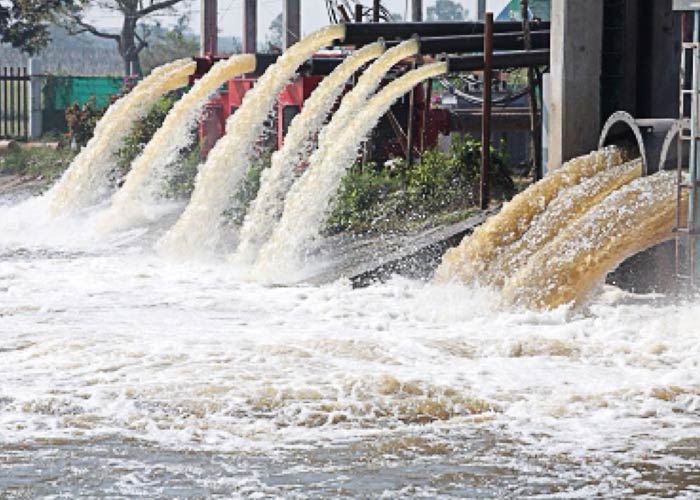It is rightly said that “water is life”. It is difficult to imagine life without water as water is essential to perform different tasks.
As heat increases, the problem of water in many parts of the country acquires terrible proportions. This problem has aggravated in successive years. In many regions in the country, due to the lack of water, the situation becomes very frightening. But we always think that when the summer season is over, the problems of water will come to an end and subsequently we turn apathetic towards water conservation.
Today water conservation has become very critical for mankind. If we are still not serious towards water conservation, then it may not a surprise that the Third World War, if it ever happens, may be fought over water resources. And, this fear does not seem to be unfounded.
Why is Water Conservation Required?
Due to increase in population, urbanization and industrialization, the quantity of drinking water available per capita is constantly decreasing, which is increasing the pressure on available water resources. While demand for water is increasing continuously, the quality of water resources, on the other hand, is rapidly declining due to pollution and adulteration.
At the same time, ground water level is falling rapidly. In order to meet the shortage of water in such a situation, there is a dire need for water conservation today.
The World Water Day is celebrated on March 22 throughout the world. Its main purpose is to make people aware of the dire need for water conservation.
Domestic Water Conservation/How to Save and Reduce Household Water Use
- Rain water harvesting
Rain water can be saved through land-based and roof-based modes. In land-based rainwater harvesting, rain water from land surfaces is collected in ponds, tanks and reservoirs. You can also utilise roof surface of your house to collect rainwater which serves well for all activities such as drinking, washing, gardening etc. To optimise the benefits of rain water harvesting, it should be made compulsory in villages, towns and cities as part of building-related regulations, and people should find ways to adopt rain water harvesting.
- Water awareness programme
Water awareness programmes should be initiated on a regular basis to stop the wastage of water; collect rainwater; constantly plant trees and avoid water pollution. We should all work together to make these efforts successful.
- Insert water overflow alarm
It is a common sight these days to see water overflowing from rooftop tanks. We have to stop it and the simplest way to do this is to add a water overflow alarm to your tank.
- Save tank water
Generally, excess water flows out of the flush. If you put sand and pebbles in one-litre bottle filled with water, you can save one-litre of water on each flush, and save thousands of litres of water throughout the year. But check your flush tank because all the flush tanks do not work effectively in the small amount of water. But you should take care that the bottle lid is closed so that the pebbles or sand do not fall in the flush tank.
- Mind water leakage
Pay attention that there is no leakage of water in the event of the flush’s faucet not being fully tight. At times, due to this reason the entire tank is emptied if left so throughout the night. Check the dripping pipeline, especially flush tanks and tap: fix every leaking equipment. Remember dripping flush tanks can waste 30-500 gallons of water per day!
So, wherever a tap or pipe leaks anywhere, it should be repaired immediately. This can prevent enough water from being wasted.
- Care for supply water
It is a privilege to get regular municipal water supply in our homes. It has been observed that often we waste the water that we get almost free of charge. Many times, when we are irrigating our garden or flower-bed, many of us leaves the water pipe there (even in the rainy season). Similarly, we forget after inserting the water-pipe in cooler or in the washing machine. Many times people leave the tapes open and get busy in the rest of the work with the result that the water just keeps dripping and going down the drain.
Because of their carelessness, people waste hundreds of litres of water in a single day. On the other hand, they are very fussy or concerned about the water filled inside their tanks. If you are also among such people, please stop being so and save every drop of water.
- Take only that much water that you can drink
When you drink one glass of RO water, keep it in mind that three glasses of water are wasted in filtering it. So, whenever you feel thirsty, only take that much as water as you can drink. And if you have to give water to others, instead of pouring out water in a glass, you can give them a glass along with a jug or water bottle, leaving it on them to consume the quantity of water as per their needs. In this way enough water can be saved.
Similarly, if you go to a restaurant, the waiter first serves water, even when you do not need it! So, when you go to such a place, accept water only when you really need it.
- Utilise waste water from RO machine or air-conditioner
75% of the total water used by an RO machine goes waste. Therefore, try to collect the water that is coming out of the machine’s pipes in bucket or the pipe’s length should to be increased to irrigate the plants. Similarly, water released from your AC unit can also be put to right use.
- Use hand pump
In earlier times, people used hand pumps only. The wastage of water was very less, which used to come out only as much as it was needed. But over the course of time, people started filling water from the motor and forgot the hand pump. It is alright if you do not have a hands pump, but in case it is there and is lying out of order, then fix it and use it occasionally. It would be good if we purposely use only hand pump once a week. By doing this, at least for one day we will take out as much water as we really need.
- Wash vegetables in a vessel
Most often, people wash vegetables and fruits with running water. If you wash vegetables kept in a large container or vessel, then less water will be consumed and vegetables will also be cleaned properly.
- Reduce wash-basin flow
Under the wash basin, a faucet is installed to control water flow. Often it is left open. If you tighten it by rotating it a little bit, the water flow will automatically reduce and considerable water will be saved from going waste.
- Keep one/half bucket extra in the bathroom
Typically during summer, the tank water gets very hot and people let out some water before bathing, after which cold water starts flowing. You should fill this water in a bucket, instead of spilling it. And it would be better if you store enough water in the bucket in the morning so that you can get cold water for bathing.
- Learn elementary plumbing skills yourself
It is often seen that the water taps keep dripping and we continue to ignore it because we do not call the plumber in laziness or think that if we call the plumber, he will fleece us. We do not show the courage to fix it. But if we keep the basic plumbing tools at home and learn to fix small things ourselves, then we can prevent a lot of water from being wasted. We can begin by teaching school children basic works related to plumbing works.
- Don’t let anyone waste water
Before leaving any leftover food in the plate, we must learn from an experience shared by Ratan Tata in a restaurant in Germany, where the citizens of the city had objected to his leaving some food in his plate, telling him that even though he had bought food by paying for it, he could not waste it because he owned the money but the resources belonged to their country!
And, the same thing has to be understood by Indians too. The wastage of water not only impacts those who waste it but the entire society. If your neighbour wastes water, your water level dips too. So, neither waste nor let anyone else waste this precious resource. Let’s save water, because water is the key to our survival.
Tips for Household Water Conservation or Reduction in Household Water Use at a Glance
- Keep the faucet closed while doing household chores such as shaving, brushing the teeth, taking a bath, cleaning utensils and washing your hands. While doing these activities, turn on the tap only when there is real need for water.
- While bathing, keep the tap closed while applying the soap and turn it open only when the water is needed to rinse the soap. While turning off the tap, use a revolving valve, put behind the fountain faucet, to change the temperature of the water.
- While waiting for filling hot water, do not waste the cold water coming from the tap/fountain and store it. Fill it in the tank for planting trees or flushing. Though there is a lot of silt and rust in the hot water tank as against the cold water tank, still this water is potable. If you use the water filter, fill the filtered water in the bottle and keep it in the fridge to drink cold water.
- Low-flowing fountains and faucets save lots of water. Most people mount them with the help of a screwdriver (you will need an adjustable ranch for this). Compared to conventional units, good-quality current units use less than half the water to maintain water pressure and flow.
- Take a quick shower. Take a timer, watch or stopwatch to the bathroom with you and take up the challenge to finish bath in minimum time possible. When bathing, listen to music or sing songs. Shave your beard outside the bathroom and keep the tap/shower off while shaving.
- Use the bucket and mug instead of shower while bathing, which saves plenty of water. For this purpose, you can take inspiration from legendary cricketer Sachin Tendulkar who is said to use only one bucket to have his bathinstead of taking a shower.
- Fit a valve behind the shower taps. The valve will help you take as much water as you need to get wet. Then, to maintain the temperature of water, keep the valve off until you apply soap. After that turn on the shower and rinse the soap.
- After bath, hang the towel on the rack to dry it in the air. Wash it only after using it for some time. Having separate towels for each member will further reduce frequency of wash.
- After bathing, washing clothes and cleaning dishes, use soapy water in the garden: If possible, circulate the water to the garden by a hose used in the outlet of the washing machine. Use the siphon pump to reuse the bath water.
- While waiting for hot water, you can reuse the initial cold water. Store that water in a bucket, or pitcher. If you store clean water (when checking water temperature), then you can use that water to wash delicate fabrics with hands. Store the water from which you wash fruits and vegetables, and use it to boil pasta or eggs.
- If you are collecting soapy water for gardening, then use soap and refining substances that do not harm the garden. If you think that soap water is not suitable for your garden, then you can use that water in toilet. Spray it in the toilet seat or fill it with flush tank (provided it does not have soil).
- Turn your flush tanks into a low flush tank or buy a two-button flush tank: In this flush tank, only a little water is released after urine is passed (use the semi flush button in the flush tank with two buttons) and more water comes out after you pass stool, which saves lots of water. You can also buy two-button flush transform-kit, which will change the water-guzzling flush into a water-saving flush. Find instruments such as select-a-flush and two-flush over the internet. Both work well and save money too.
- Be sure to use your toilet properly: Do not flush all the time. It is said that if the water of the toilet is yellow, then it may be allowed to stay, if the water is brown, then flush. Also, do not use your toilet as a litter-pit. On flushing every time, you lose 9 litres of clean water, which is sheer waste.
- Replace your old washing machine with a high capacity machine: The old-fashioned top loading machine uses 40-50 gallons of water on every wash, and a normal four-member family washes clothes 300 times a year. The high capacity machine, especially the front loading machine, uses 15-30 gallons of water for every load. So, purchase your washing machine carefully. Front loaders use less water than top loaders. Use such detergents that quickly wash clothes and do not need to wash again. By adopting these methods, 11,400-34,000 litres (3000-9000 gallons) water can be saved every year.
- Instead of washing a few clothes daily in the washing machine, wash only when the clothes are assembled. Wash the clothes when the machine’s load capacity is fully utilised: wait till the machine’s own load is complete. Do not wash the clothes because you want to wear a trouser the next day too. Use the economic mode and fill the machine to the full while washing clothes, which will save you water and electricity.
- Wash less clothes. If you and your family puts less clothes for washing, it will save your time as well as water. Only when your clothes appear to be dirty or smelly, they need to be washed.
- Wear clothes more than once. If you take a bath before going to bed, then you can wear a pyjama continuously for a few nights. Change socks and underwear every day, but wear slacks, jeans and skirts more than once before washing. If you wear a sweater or sweatshirt above the T-shirt or tank top then change only the inside clothes.
- Do not change clothes many times in a day. If you are doing a job that makes your clothes dirty such as gardening, dyeing and exercising, keep old clothes for such things and use them some times before washing them. Wash clothes before bathing, so that you do not have to take bath again.
- When washing the car, use bucket and mug instead of pipe, it saves a lot of water.
- Clean the pot before washing dishes. Scrub clothes and scrape large pieces of food into the garbage bin or separate it for manure. If your utensils are not clean without pre-rinse, make sure that you have put the utensil properly in the machine. Also, check whether or not you are using effective detergent in dishwasher or see if your dishwasher works right.
- Modern and efficient dishwashers save water compared to washing dishes by hand because they push the same water with a pump in the tubes of the machine. If you are ready to take a new dishwasher, check the power and water consumption of the machine before purchasing.
- While washing the utensil, instead of continuously opening the tap, fill the water in a bucket, to save considerable water. Put soap water in a container and drop it in the garden.
Use the waste disposal machine carefully. This machine takes lots of water to destroy waste, which is unnecessary. Better than washing the solid waste in the sink, deposit it in the trash or put it in the compost bin.

